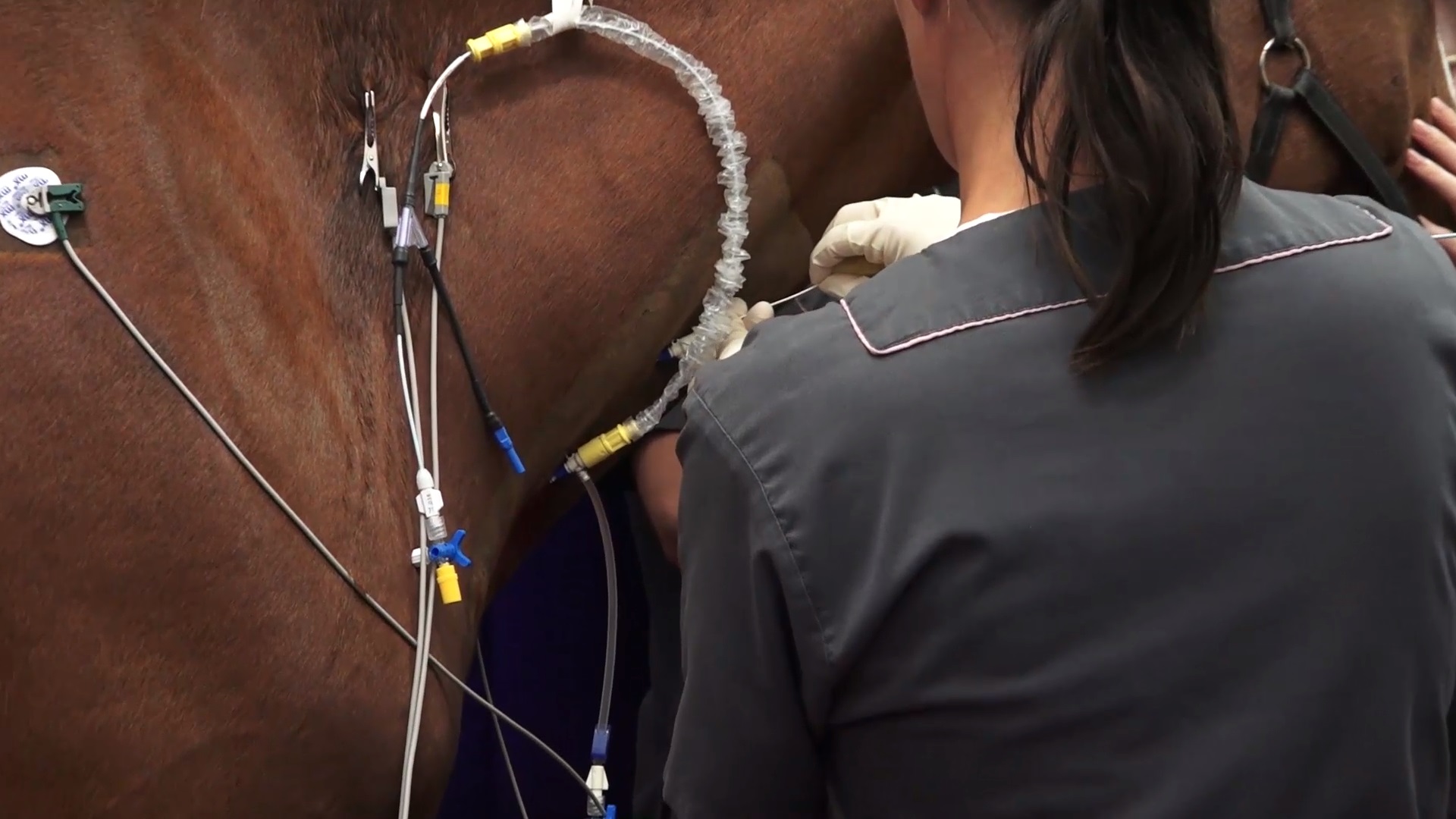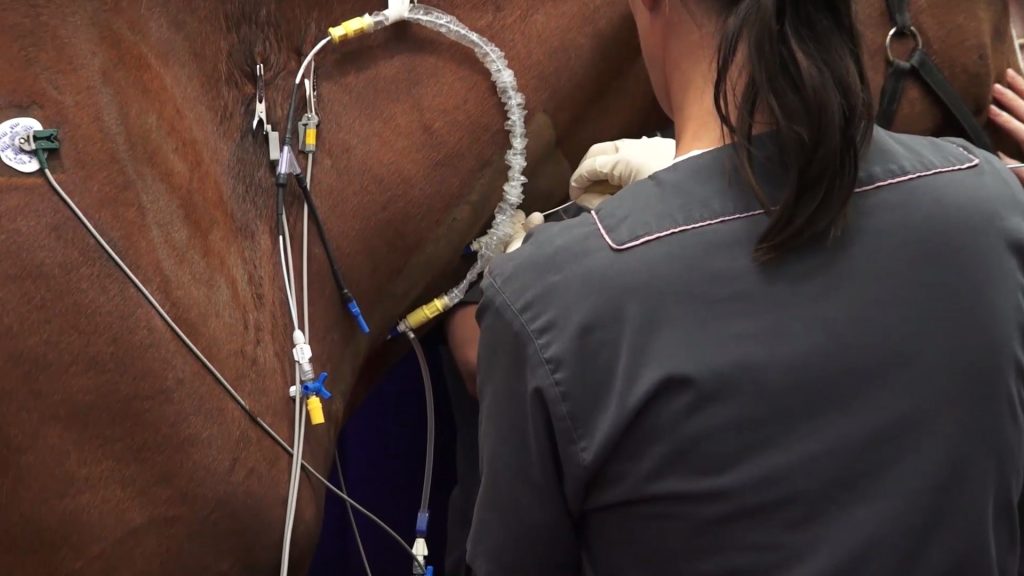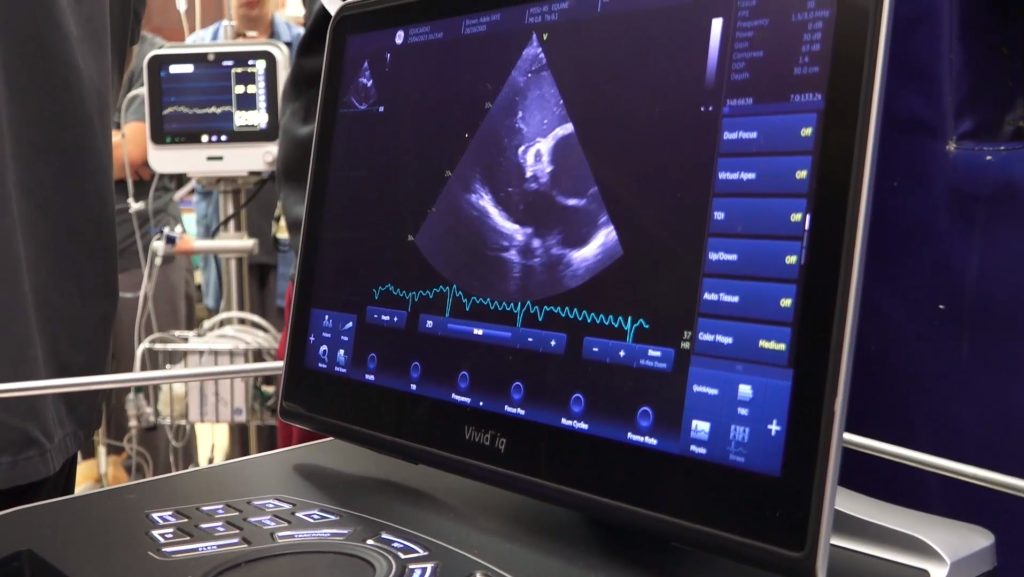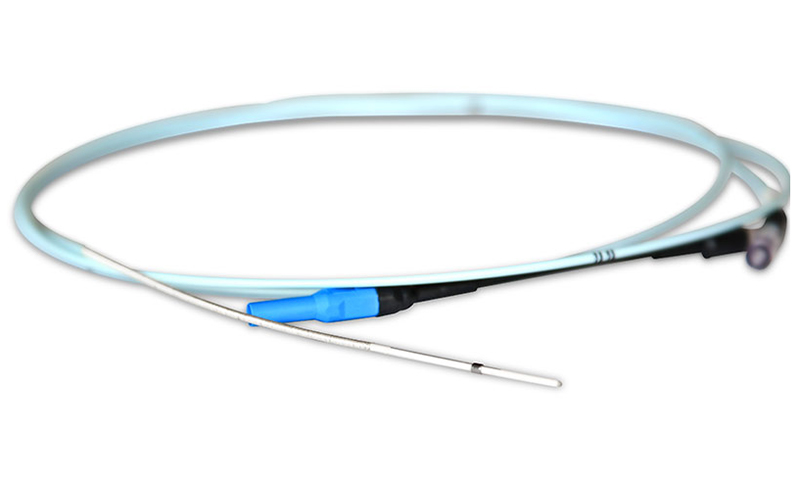Treating Equine Atrial Fibrillation with Transvenous Electrical Cardioversion (TVEC)
Introduction
In a first for South Africa, Dr Christina Eberhardt, a senior lecturer and equine cardiology specialist from the University of Pretoria, led a team through a successful equine transvenous electrical cardioversion (TVEC) case, restoring a regular cardiac rhythm to a 17-year-old horse called Skye. In this blog article, we examine the significance of equine atrial fibrillation, the reason why TVEC is the preferred treatment strategy in some cases and describe the TVEC procedure in greater detail.
We are extremely grateful to Dr Eberhardt and her colleagues for sharing details relating to Skye’s treatment, including a summary video that documents the case. The Digitimer TVEC catheters used by the team at the University of Pretoria have been developed with the considerable help and guidance of Dr Peter Physick-Sheard BVSc, MSc, FRCVS associate professor in the Department of Population Medicine at the Ontario Veterinary College at the University of Guelph and Digitimer Ltd is very grateful for his past and ongoing support.
Atrial Fibrillation
Atrial fibrillation is the most common clinically significant rhythm disturbance in the horse, and is estimated to affect up to 2.5% of the equine population. Although a physical examination can reliably suggest the presence of the problem, and an ECG will confirm the diagnosis, clinical signs are not obvious. If a horse is never asked to perform maximally or to maintain a sustained high level of working, the presence of the rhythm disturbance may go unnoticed.
Unlike the situation for humans with AF, consequences in the horse are limited to a tendency to tire at work for the average horse, and obviously poor performance for maximal performers such as the racehorse. Affected horses can have a long and happy life, but they are clearly no longer athletes. Humans often show the rhythm disturbance in association with some form of organic heart disease. In the horse, there is most often no underlying disease, which means that if the disturbance can be corrected the prognosis is often excellent.
Pharmacological Treatment of Atrial Fibrillation
Treatment has traditionally employed the use of quinidine sulphate administered by stomach tube, and occasionally intravenously. This resolves the problem for a significant percentage of horses, possibly up to 75%, but the drug has a very narrow therapeutic margin and is associated with a range of dose-related and idiosyncratic toxic effects. This means that some horses may not be able to tolerate the drug, and may show significant signs of toxicity before the drug has had a chance to achieve a therapeutic effect. This is particularly the case in horses that have had the arrhythmia for a prolonged period (more than two weeks). Horses that are sensitive to the drug may show intolerance with as little as a single dose. Even horses that tolerate the drug relatively well may require fluid therapy and intensive care for a day or two to help them get over the toxic effects. Finally, horses often require 2-3 weeks to get over drug treatment before they can return to serious training.
Transvenous Electrical Cardioversion (TVEC)
Transvenous electrical cardioversion (TVEC) involves converting the horse to normal (sinus) rhythm through the use of intravenous catheter-mounted electrodes and a standard cardiac defibrillator. Two catheters are placed through the jugular vein, one into the left pulmonary artery by flowing the catheter through the heart, the other in the right atrium. Electrical shocks are then delivered under general anaesthesia to return heart rhythm to normal. The procedure requires careful placement of two custom-designed, special-purpose catheters [Digitimer Ltd TVEC Electrode Catheters, Order code: TVEC] in the standing horse under ultrasound and pressure guidance, followed by radiographic confirmation of electrode placement. The approach has now become the treatment of choice for horses that cannot tolerate drug therapy, have been in AF for a prolonged period, have previously failed to respond to medication, or for which minimal interruption of training is required. Treated horses that respond are often back in full training in 4-5 days after recovery from general anaesthesia. Treatment response to date has been almost 100%.
It is important to understand that while TVEC provides a therapeutic option for horses that cannot otherwise be treated, often returning them to their previous level of athletic activity, the use of this modality does not influence prognosis when compared to successful cardioversion by any other technique. Clinicians should expect that approximately 20% of horses will relapse at some point, anywhere from hours to months after treatment, and will need to be treated again if they are to maintain their athletic/work performance. Note also, that the foregoing describes the situation for horses with lone AF, that is, arrhythmia in the absence of organic heart disease. While horses that are affected with AF as a consequence of heart disease, such as valvular regurgitation, can often be treated successfully, prognosis may be significantly different. Such animals need to be assessed on a case-by-case basis, since cardioversion attempts may not be the most appropriate approach to take to clinical management.
First & Second Equine TVEC Cases in South Africa
The first patient with atrial fibrillation that underwent TVEC was Skye, a 17-year-old Warmblood. Dr Eberhardt and her team had previously treated Skye, 18 months ago, for atrial fibrillation. “We used quinidine sulphate, because we didn’t have the fairly expensive equipment for TVEC at that time,” Dr Eberhardt said. Although the treatment was successful, Skye was diagnosed with atrial fibrillation again after a follow-up examination. Recurrence of atrial fibrillation happens in about one third of horses.
Knowing that Dr Eberhardt had the expertise to perform TVEC, Skye’s owner approached her to ask if the procedure could be done on Skye. The correct equipment was sourced and, with the support of Trojan Medical and Digitimer, TVEC was made possible for Skye – and for future patients diagnosed with atrial fibrillation.
Dr Eberhardt completed her equine internal medicine and cardiology specialist training at the University of Zurich, Switzerland, where she gained the expertise to perform TVEC. Her equine cardiology consulting service, EquiCardio, offers comprehensive evaluation for horses with heart murmurs and arrhythmias in South Africa. The EquiCardio team has the best and latest equipment currently available for the examination and treatment of horses with heart disease.
The team is excited to be able to offer this new treatment option. “Skye was successfully treated, and had no complications. He is doing well after the procedure and can now return to full exercise,” Dr Eberhardt said. Shortly after Skye, the team saw a second horse with atrial fibrillation, and TVEC was successfully performed again.
You can read more about this specific case on the University of Pretoria website.



